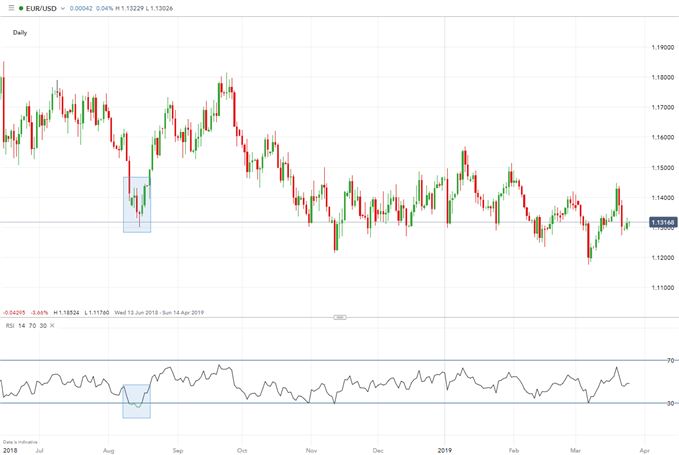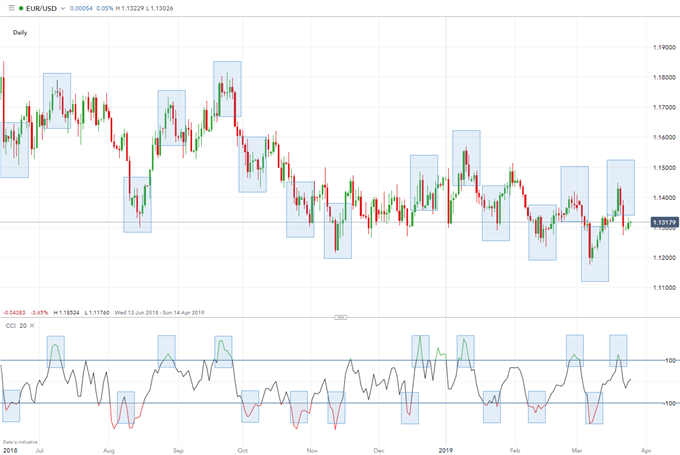[ad_1]
The Secrets of Consistent Trading: Talking Points
Having a consistent trading strategy can’t be understated when it comes to the process of trading. This is because uniformity leads to sensible trading decisions. But building an edge in the market has more to do with a consistent method you are comfortable with, as opposed to a perfect system that grabs 100% of the pips in a market movement.
In this article the importance of consistent trading will be covered from the type of analysis and usage of tools, to trade execution and risk management.
What is consistency in trading and why does it matter?
Consistency in trading refers to the constant/repetitive nature of an individual to a set of trading principals. This adherence allows the trader to avoid ‘over-trading’ whilst maintaining appropriate risk management. There are varying characteristics of consistent trading which include:
- Following a trading strategy
- Analysis
- Avoiding over and under-trading
- Proper risk management
- Tracking and review of trades
Consistency in trading acts as a catalyst for successful trading because it circumvents emotional influence by the trader. Irrationality and irregularity often lead to inconsistent results as seen in the charts below.
Chart one below depicts an over simplified strategy of using an RSI oscillator to time entry/exit points in a trending market. Chart two makes use of the CCI oscillator for the same market to identify entry/exit points. Chart two shows a significant increase in frequency of overbought and oversold signals – highlighted by the blue rectangles.
This straightforward comparison shows how changing strategies can alter trading decisions and consistency in trading (even with a minor change such as a different oscillator). Trading strategies are generally far more complex than the examples below, therefore deviating away from a trade strategy can result in variable results.
Chart 1: Daily EUR/USD with RSI indicator
Chart 2: Daily EUR/USD with CCI indicator
How to build a consistent trading strategy
There are a number of ways traders can adopt a consistent approach to trading. Planning ahead, applying risk management and journaling day to day activities and price movements are among the most important.
1. Have a trading plan– A detailed plan of attack provides the framework necessary for a trader to ‘stay on course’. There are facets to trading which a trader can control, and those they have no control over whatsoever. Following a minimalist method of analysis is one such way to stay in control and helps to avoid ‘paralysis by analysis’.
For simplicity, it’s recommended that traders stick to a few core methodologies/tools when analysing price movements. There is a plethora of ways to analyse and view the markets, with no real right or wrong way. The key is to be consistent in whichever approach is preferred.
2. Be consistent when executing trades – There are various ways to execute upon identified opportunities in the markets. For example, when trading breakouts; does the trader buy the first price above a certain level or wait for the candlestick to close first? Or, maybe a combination of the two? Any of the prior is fine, but the more important point is that there is consistency in trade.
3. Risk management – Risk management is the single most important aspect to trading success and where many traders fail. It must be approached consistently if a trader expects to achieve consistent results. Trading is about probabilities: win percentage x win/loss ratio. With that in mind, if traders do not have a consistent risk-per-trade amount, those probabilities will not matter as winners and losers will be on varying amounts of risk.
For example, if a trader makes 2% on one trade, loses 4% on the next, then makes 1% on another, this will result in uneven (and in this case, negative) results – even though two out of three trades were profitable. Risk/reward (stop/target) objectives need to be consistently skewed in the favour of the trader.
4. Keep a journal – An excellent way to ensure consistency is by keeping a trading journal, whether it be daily or weekly. Monitoring activity and factors that are influencing decision-making allows traders to remain consistent in their trading strategy. Traders should review trades periodically by overlaying previous trades with the trading plan for intended correlation.
What about a consistent forex trading strategy?
Consistency in trading begins with identifying a strategy that best suits the traders needs and resources. When it comes to implementing a consistent forex trading strategy, traders generally gravitate towards technical or fundamental analysis.
Take a look at how to combine both technical and fundamental analysis.
Further reading to improve your trading skills and confidence
- Our research team analyzed over 30 million live trades to uncover the traits of successful traders. Incorporate these traits into your strategy to give yourself an edge in the markets.
- Take a look at our webinar on trading psychology and how it fits into the foundations of technical analysis. DFX analyst, Paul Robinson also hosts a Becoming a Better Trader webinar series, which offers insight into consistent trading approaches.
- If you are just starting out on your forex trading journey, it is essential to understand the basics. Download our free New to Forex guide to get up to speed.
[ad_2]
Source link






